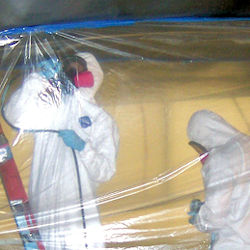Lead Basics
What is Lead?
Lead is a cumulative and persistent toxic substance that poses a serious health risk. It is a naturally occurring element found in small amounts in the earth's crust. While lead does have some beneficial uses, it can be toxic to humans and animals, causing health effects.
Pure lead (Pb) is a heavy metal at room temperature and pressure. A basic chemical element, it can combine with various other substances to form numerous lead compounds. Below is a description of the characteristics, uses, and Permissible Exposure Limit (PEL), and Action Level (AL) for lead:
- Substance: Pure lead (Pb) is a heavy metal at room temperature and pressure and is a basic chemical element. It can combine with various other substances to form numerous lead compounds.
- Compounds Covered by the Standard: The word "lead" when used in this standard means elemental lead, all inorganic lead compounds and a class of organic lead compounds called lead soaps. This standard does not apply to other organic lead compounds.
- Uses: The primary use of lead in the U.S. is for automotive lead-acid storage batteries, a type of rechargeable electric battery which uses an almost pure lead alloy. Lead-formed alloys are typically found in ammunition, pipes, cable covering, building material, solder, radiation shielding, collapsible tubes, and fishing weights. Lead was used extensively as a corrosion inhibitor and pigment in paints but concerns over its toxicity led to the CPSC in 1977 to ban the use of lead in paint for residential and public buildings.
- Permissible Exposure: The Permissible Exposure Limit (PEL) set by the standard is 50 micrograms of lead per cubic meter of air (50 ug/m(3)), averaged over an 8-hour workday.
- Action Level: The standard establishes an action level of 30 micrograms per cubic meter of air (30 ug/m(3)), time weighted average, based on an 8-hour work-day. The action level initiates several requirements of the standard, such as exposure monitoring, medical surveillance, and training and education.
We encourage you to visit the NIOSH Pocket Guide to Chemical Hazards - Lead webpage that contains chemical and physical properties and other information on lead.
Knowledge Check Choose the best answer for the question.
1-1. Lead is no longer found in _____.
You forgot to answer the question!

